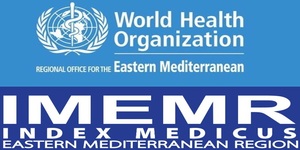Effectiveness of Daily Living Activities Program on Total Cholesterol, Low-Density Lipoprotein, and High-Density Lipoprotein of Patients with coronary artery disease
DOI:
https://doi.org/10.36321/kjns.vi20212.2064Keywords:
Coronary Artery disease, Daily Living Activities, Total cholesterol, Low-density lipoprotein (LDL), High-density lipoprotein (HDL)Abstract
Background: High levels of total cholesterol, low-density lipoprotein (LDL), and low levels of high-density lipoprotein (HDL) are risk factors for patients with coronary artery disease (CAD). Daily activities are very important for CAD patients due to their effect on improving heart functions, lipid profile, reduced risk factors, decreased incidence and the recurrence rate of CAD.
Aims of the study: To find out the effectiveness of daily living activities program on Total Cholesterol, LDL, and HDL of Patients with coronary artery disease.
Methodology: A pre-experimental study design was implemented of the period 20th of December 2020 to the 4th of April 2021.The study was carried out in AL-Nasiriya Heart Center in AL-Nasiriya city on 40 coronary artery disease patients selected by using A non-probability (purposive) sampling method was used for selecting the study sample. The study instrument is composed of 4 parts. The first is demographic characteristics, the second part is the clinical history of patient and unhealthy behaviors, the third part is about investigation of total cholesterol, low-density lipoprotein, and levels of high-density lipoprotein, and the fourth part consists of two items related to patients’ responses regarding risk factors, importance of activity, healthy diet, and stress management.
Results: The study reveals that (50.0%) of the participants in the study sample at age group (56–66) years old, and (57.5%) of the participants in the study sample are females, (82.5%) of study sample is married and (85.0%) was urban resident, (35.0%) of the study sample was Graduated of middle school education, (52.5%) of study sample was housewives, and (52.0%) of them are in sufficient income, also (55.0%) of them have (7-9) persons in their family. The results indicate that there is significant statistically differences between pre and post-test for total cholesterol p value (0.044), high density lipoprotein p value (0.00), and low density lipoprotein p value (0.006). Also showed that the cholesterol normal category was (2.5%) changed to (12.5%); Borderline high category was (97.5%) decreased to (87.5%) at post-test, high density lipoprotein normal category was (00.0%) changed to (17.5%); borderline high category was (12.5%) changed to (37.5%); high category was (87.5%) changed to (45%) at post-test, low density lipoprotein normal category was (00.0%) increased to (17.5%); borderline high category was (100%) changed to (82.5).
Conclusion: The study concluded that the instructional program of daily living activities was effective in improving the levels of total cholesterol, low-density lipoprotein (LDL), and levels of high-density lipoprotein (HDL) of the study sample after the program implementation.
Recommendations: Educating coronary patients on the effects of hyperlipidemia on the health of their coronary arteries, as well as encouraging them to participate in daily activities. Increase patient awareness by using Mass Media about the importance of exercise and a healthy lifestyle and its impact on the lipid profile to reduce the incidence and the recurrence rate of CHD.
Downloads
Downloads
Published
How to Cite
Issue
Section
License
Copyright (c) 2022 Mustafa Waheed, Huda Hassan

This work is licensed under a Creative Commons Attribution 4.0 International License.













